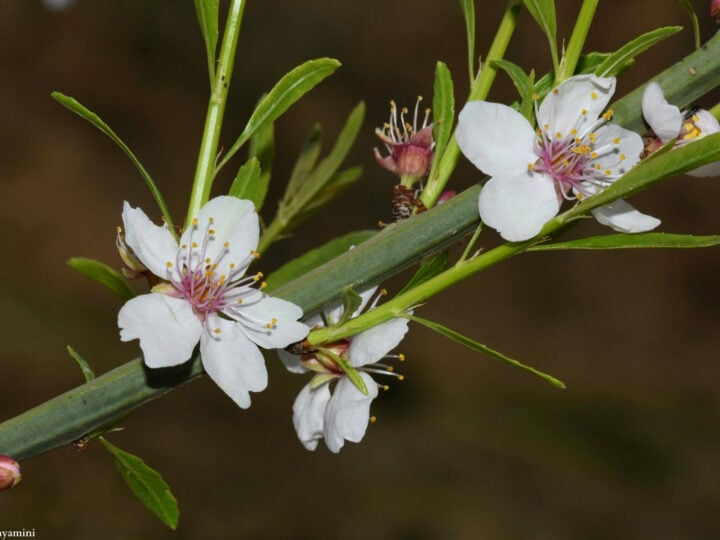Israel’s almond trees are the first to bloom each year, coinciding with the Jewish holiday of Tu B’Shvat — the New Year for Trees — which falls on February 11 this year.
Almond blossoms are extraordinarily beautiful, giving a white and pink glow to the cold winter and a promise of the warm spring ahead.
The edible seed of the almond fruit is nothing special to look at, but contains a superfood nutritional profile. Reuven Birger, chairman of Israeli Almond Board, says almonds are becoming ever more popular as an excellent plant source of calcium and protein.
Birger tells ISRAEL21c that in 2016, 6,200 tons of almond kernels (the edible part) were harvested from 45,000 dunams (11,120 acres) of almond trees in Israel. Another 5,000 dunams (1,200 acres) of young almond trees, not yet producing nuts, will be critical in helping meet demand, as Israelis now consume about 7,000 tons of almonds per year.
Bet you didn’t know all these cool facts about almonds.
- The almond fruit technically isn’t a nut but a drupe. The part we eat is the kernel, or seed, inside the elongated stone (shell). Other drupes are peaches, plums, cherries, walnuts and pecans.
- University of Haifa researchers discovered that almond flower nectar contains a unique poison that does not harm bees, and which bees find irresistible. The scientists speculate that this toxic substance therefore gives the almond tree a reproductive advantage.
 Blooming almond trees in the Elah Valley. Photo by Nati Shohat/FLASH90
Blooming almond trees in the Elah Valley. Photo by Nati Shohat/FLASH90
- Almonds provide calcium, protein, vitamin E, magnesium, phosphorus, potassium, zinc, copper, manganese, B vitamins, natural fiber, antioxidants and cholesterol-lowering monounsaturated fat. Studies show they protect against diabetes, gallstones and cardiovascular disease.

- While the United States produces the most almonds in the world, Israeli almonds are larger, tastier, and contain 10% more calcium than American and most other varieties.
- Last summer, Almond Board of California Director of Agricultural Affairs Bob Curtis and almond grower Don Cameron of Terranova Ranch joined a delegation from the California Department of Food and Agriculture in a fact-finding trip to see how the Israel’s advanced irrigation and planting strategies and technologies lead to better efficiency and sustainability.

- The biblical book of Genesis describes almonds as “among the best of fruits.” There are nine additional mentions of almonds or almond blossoms in the Hebrew Scriptures. In Christian iconography, almond branches symbolize the virgin birth.
- The seven-branch menorah (candelabra) in the Holy Temple was meant to resemble an almond blossom as described in Exodus: “Three cups, shaped like almond blossoms, were on one branch, with a knob and a flower; and three cups, shaped like almond blossoms, were on the other… on the candlestick itself were four cups, shaped like almond blossoms, with its knobs and flowers.”
 Image of the golden menorah by Evikka/Shutterstock.com
Image of the golden menorah by Evikka/Shutterstock.com
- Almond oil is used in many made-in-Israel cosmetics such as body butter and facial scrubs and creams. Almond oil is also used in traditional medicines, aromatherapy and pharmaceuticals.
- The word “almond” derives from the Greek word “amygdala,” which is why the almond-shaped structures in the brain are called amygdalae.
- The Hebrew word for almond, shaked (pronounced “shah-kaid”) is also a popular name for both boys and girls.
- There’s an entire museum in Israel dedicated to marzipan, also known as almond candy dough, at Shaked Tavor in Kfar Tavor in the Jezreel Valley. Shaked Tavor offers Tu B’Shvat tours and year-round marzipan and chocolate workshops on Fridays and holidays.
Fighting for Israel's truth
We cover what makes life in Israel so special — it's people. A non-profit organization, ISRAEL21c's team of journalists are committed to telling stories that humanize Israelis and show their positive impact on our world. You can bring these stories to life by making a donation of $6/month.








